African Safari - Feb'19
- Kenya Safari with Vihang Travels
It started way back in Dec’17 when I first thought about Kenya. Those were my first few months in Photography and taking a trip directly to Kenya was little unheard of. I decided against going, although many of my fellow Vihang friends were on the 2018 tour.
Finally in October’18, I mustered the courage to take the plunge. Courage on 2 fronts, first being the enormous costs involved and second (and more important) I wanted to make maximum out of the photo-opportunities available (still not sure whether my photography skills are upto the mark, but the temptation of visiting the Mecca of Wildlife was just unavoidable). And luckily Deepa also decided to join (it’s easier that-way to justify the costs, isn’t it?).
This time the group was much smaller, just 6 of us (myself, Deepa, Yudhi-kaka and Asha-kaku, Milind Gogte and our Guruji, Yuwaraj Gurjar). But that meant we could fit into one safari vehicle thereby making it better to manage on field
Saying yes for the trip was the easiest part, the fun started with the vaccinations. For visiting the African nations, one needs to get the “Yellow-fever shot” (once done, valid for life) and also the “Polio-dose” (validity only 1 year). The best place to get both done is the “Airport Health Organization” near the International Airport. They have their strict rules/guidelines that make it hard to get it done. We reached the location at 8am (when the gates were to open only by 10) and managed to get both the vaccinations done by about 1pm. Not getting into the details as that could end-up being a full-fledged blog in itself.
That being done (by that time, Air tickets were also done via Kenya Airways) we were now ready for the trip. But wait, what camera gear to take? That was the million dollar question. Best answer was, carry whatever camera & lenses you can get/beg/borrow.. have as many cards, batteries too. Plus carry a HDD for backup. So that part was also taken care of. We decided to take 2 80D bodies (one for zoom lens and other for wide angle). We had 2 cameras for Deepa as well (Point-n-shoot and GoPro for videos).
In the last week of January when we were about to start bag-packing, Yuwaraj gave us the scare! Typically for the international travel each of us were allowed to carry two check-in bags of 23kg each plus the hand luggage of about 8-10 kgs. Accordingly we had made the plans. But Yuwaraj announced that since we are traveling by a small 18 seater aircraft between Samburu and MasaiMara, we were allowed to carry only 15kg per person (including cabin, check-in, everything), that was a real last-minute bomb on us, but we managed with the help of Yuwaraj (he bought an additional luggage ticket).
Finally the day arrived.. on 1st Feb we started from home just after mid-night for the 6am flight. Flight was on time, reached Nairobi at around 10:30am local time. And by the time we were out of the Airport (after visa formality, customs, foreign-exchange, local SIM cards, etc.) it was midday. Our tour was arranged thru Gamewatcher Safaris and their representative greeted us immediately. We then walked to the vehicle; this was the same 4 wheel drive LandCruiser that will be accompanying us for next 4 days, including the safaris. And Nicholas was our driver as well as safari guide. He immediately got talking and made us comfortable.
He hurried us thru the Airport and quickly started on the journey, he suggested not to wait for lunch either (luckily Vihang travels had the packed lunch ready for such occasion). We just had one little break on that 6 hour journey. We had the “Mount Kenya” view for company during those hours.
By about 6:30, we just reached at the main entrance of the Samburu National Park and that’s when Nicholas told us that we had to reach this point during day-time, otherwise they just won’t allow entry. That is the reason why he was hurrying us all thru the 380 odd kms that we had traveled.
Nicholas completed the gate formalities and we started going to our camp. It was late and there was not much light, but the moment we started from the gate, WE HAD ARRIVED IN KENYA.
Within a minute, we were face-to-face with 2 giraffes; that was amazing. Suddenly all of us were expressing oho-aha-wow….. Didn’t even remember to get our cameras from the bag on time.
But this was not all, very soon we saw a Martial Eagle, Black-shouldered kite and few water-bucks and some more… that’s where we got the inkling of what to expect in the next 7-8 days, and “boy” We were not disappointed at all..
By the time we reached the Ashnil Samburu Camp, it was already dark. On entry, we filled-up the forms, got the keys and also the necessary instructions from the hotel staff (things like, not to wander away from path-lights, no electricity after mid-night, etc. etc.). We soon realized that our tents were way far from the reception (almost a 500 mtr walk).
Tired that we were, we had to assemble again at 8pm for dinner. We just had time for a quick shower before that. Dinner was a buffet (and also had vegetarian option) and food was good. Our next instructions were “be ready by 6:15 in the morning, come to reception for tea-breakfast and then head straight for the first safari”… and similar routine of 5am alarm continued for the next 7 days…
Day 2 (Feb 3, 2019)
The excitement ensured we were up before the alarm and ready to start well on time. Coffee and breakfast rituals were quick and we were already on road well before 7am.
We were not even 10 minutes into the drive and we came across a small herd of elephants (including a small baby elephant). There were Spurfowls & Sandgrouses also on display, and the swallows too.
Little further, we could see the vulture nicely perched at height. We had 2-3 small stops for photos.
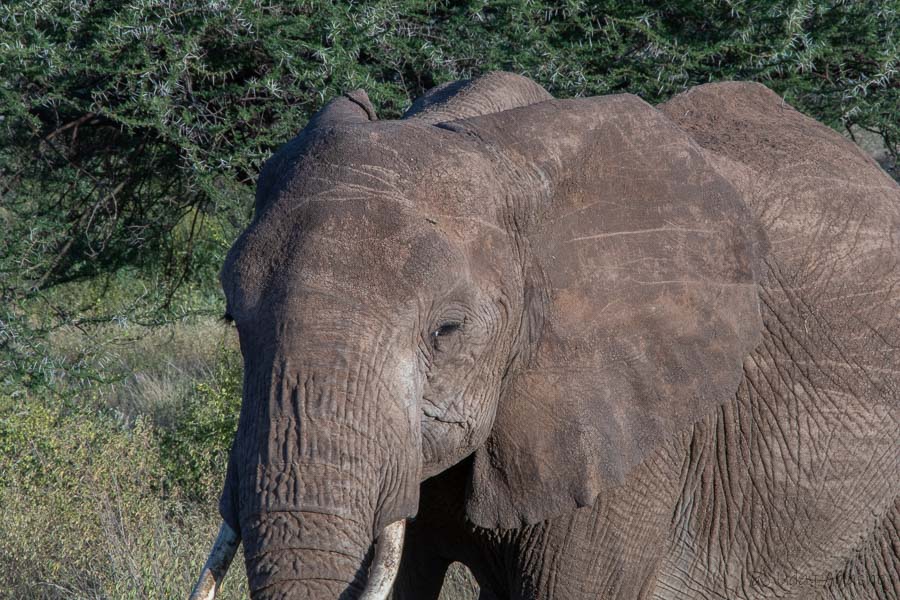
African Elephant

Spurfowl

Black-faced Sandgrouse
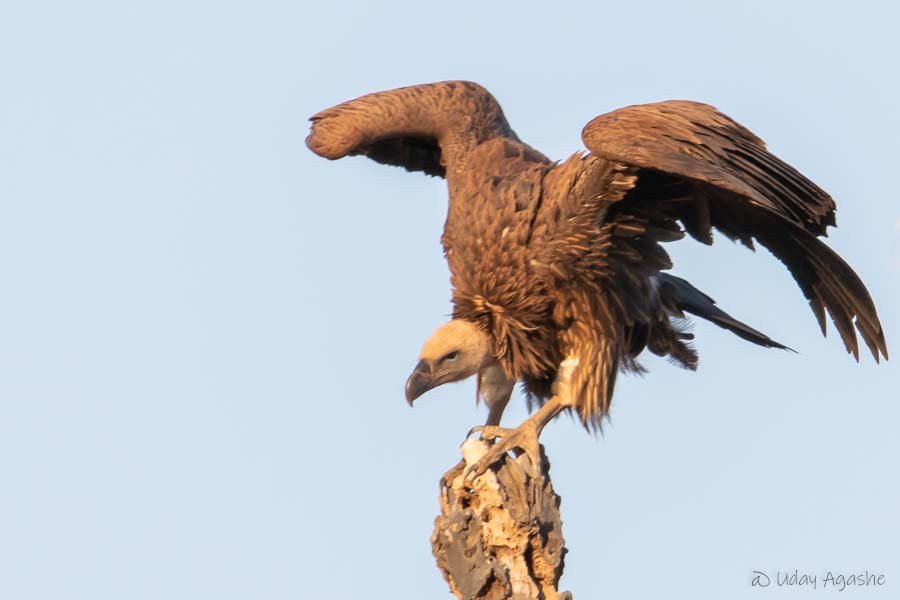
Vulture
Next on menu was a gazelle male trying to woo 2 females from the herd. Little further from them was a red-billed hornbill overlooking the surrounding area.
 Gazelle
Gazelle
 Hornbill
Hornbill
Then we were treated with beautiful secretary bird. This bird gets its peculiar name because of 2 things: first the long quill-like feathers, lending the bird the appearance of a secretary with quill pens tucked behind their ear, as was once common practice. Secondly, the long legs and the coloration gives appearance of the short-skirt. It kept walking like on a ramp.
Little further, a family of grey-crowned storks were doing their rounds (another beautiful bird).
 Secretary Bird
Secretary Bird
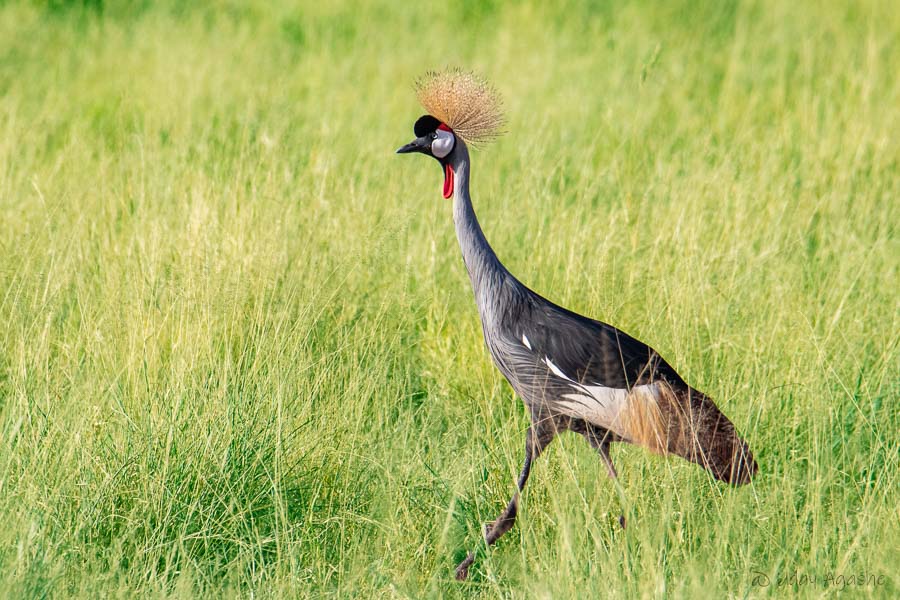 Grey-crowned Stork
Grey-crowned Stork
Nicholas, our guide was on his toes all the while, explaining us about the Samburu topology as well as the beautiful inhabitants of the jungle.
Immediately next, was the Kori Bustard (I had missed the MacQueen’s bustard in LRK earlier, so this was special). These are the largest flying birds native to Africa. Although they can fly, they mostly prefer to run on the ground (like other bustards). While we were taking pictures, we observed a different type of antelope, that turned out to be one of Samburu big5, the “Beisa Oryx” (an Endangered Species). These are well built with 2 straight-ish horns, dark patches on the face and abdomen.
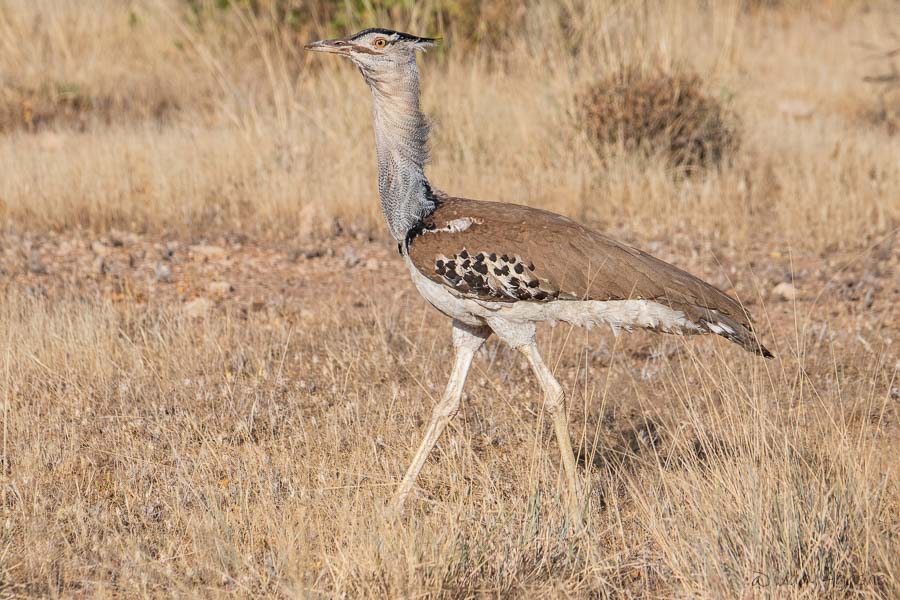
Kori Bustard
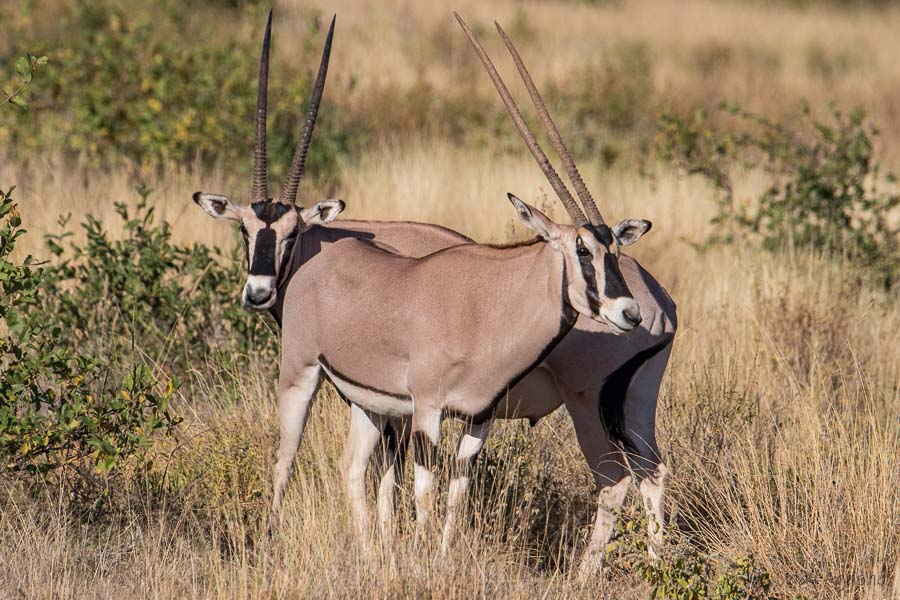
Beisa Oryx
Next in line, were a big group of Olive baboons galloping on both sides of our vehicle and a beautiful looking ‘lilac breasted roller’.
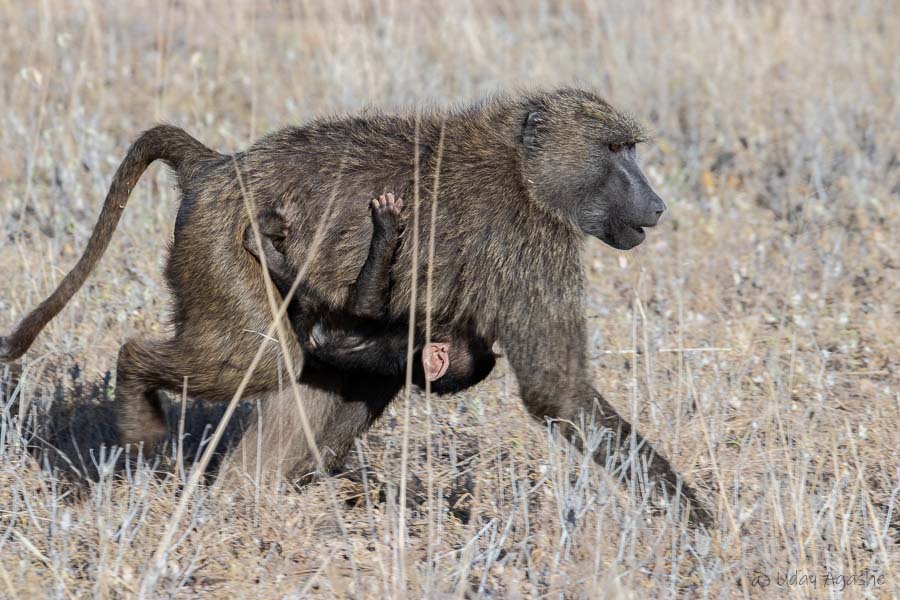 Olive Buboon
Olive Buboon
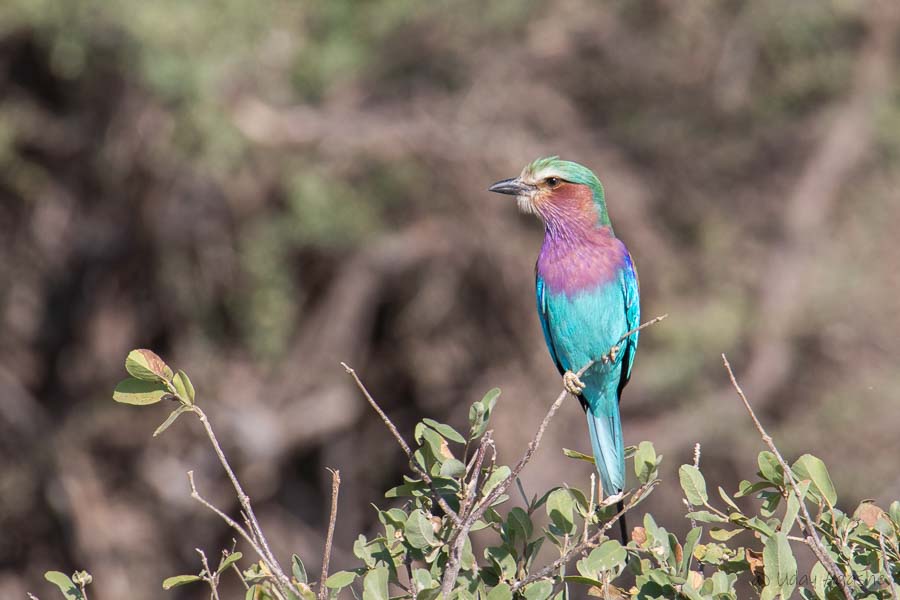 Lilac-breasted Roller
Lilac-breasted Roller
Little further and we were seeing another Samburu big 5, the Somali Ostrich. Probably the biggest bird, though it is flightless. Another Samburu special, the Gerenuk (or the Giraffe antelope) was also near by.
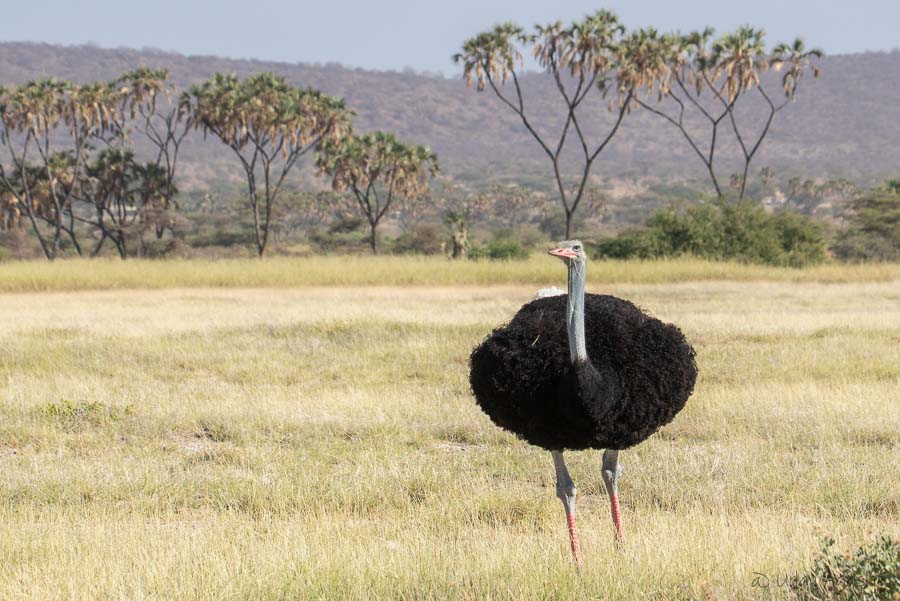 Somali Ostrich
Somali Ostrich
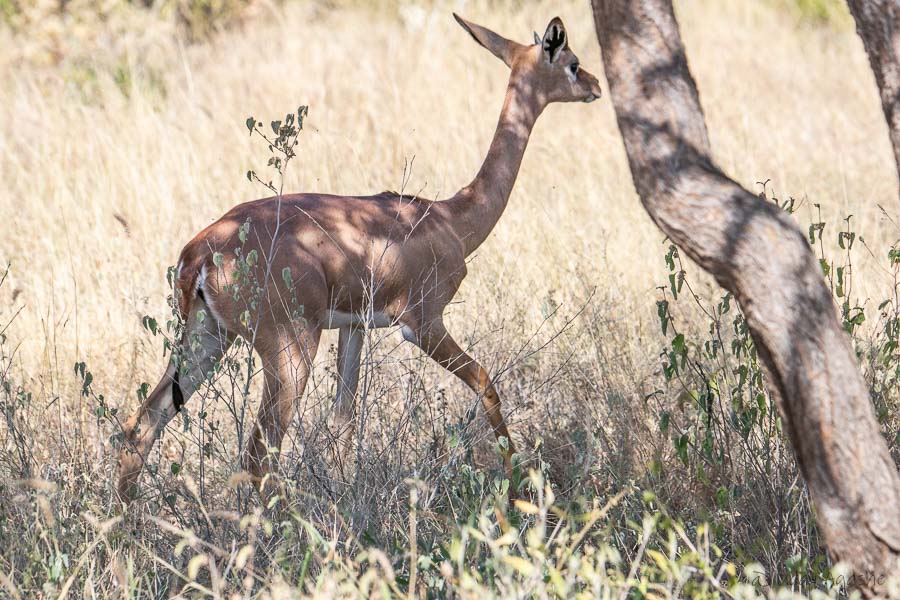 Gerenuk
Gerenuk
It was only 9am and we had seen so much of variety in those 2 hours, this I think is only possible in Africa. We all (at least the first timers) were just awestruck by the jungle here.
Throughout the next 7 days, there was just so much variety that I will probably skip a lot of species in my blog (have already omitted some even in the above description).
We thought we had enough for the day but something much bigger was in store for us.
All this while, there was intermittent chatter on the radio/walkie-talkie and Nicholas was on it. At one point, this increased a bit and there were the calls of “Roger-roger” that we could decipher; everything else was in the local language. That was followed by sudden acceleration of our jeep. (We later realized that this is going to be the trend, “roger-roger” will always be followed by something special)
Nicholas was taking us to another place that appeared to be very far from our location. The terrain also looked little different, there were some dense vegetation and mountainous areas too. We suddenly saw 3-4 other jeeps that were stationary, which definitely meant something of interest was near-by.
And before we realized, there was a small roar by a lioness and we were watching a lion-pride onto a warthog prey, the poor warthog wasn’t dead yet and the lioness was chocking it’s neck, it was over pretty soon. The cubs had already started on the prey but the lioness wanted to take it to a safe area (inside a bush). The strong lioness pulled the warthog (along with the cubs tagging along) and took it past us. So much happened so quickly, before we realized the show was over too. The whole sequence played out in front of us only for about 20 minutes and we all were in a clicking frenzy (loads of videos as well). The raw violence of the scene does touch you, but that’s nature. Without the prey, the lions and their cubs would go hungry.
 Lions on WartHog kill
Lions on WartHog kill
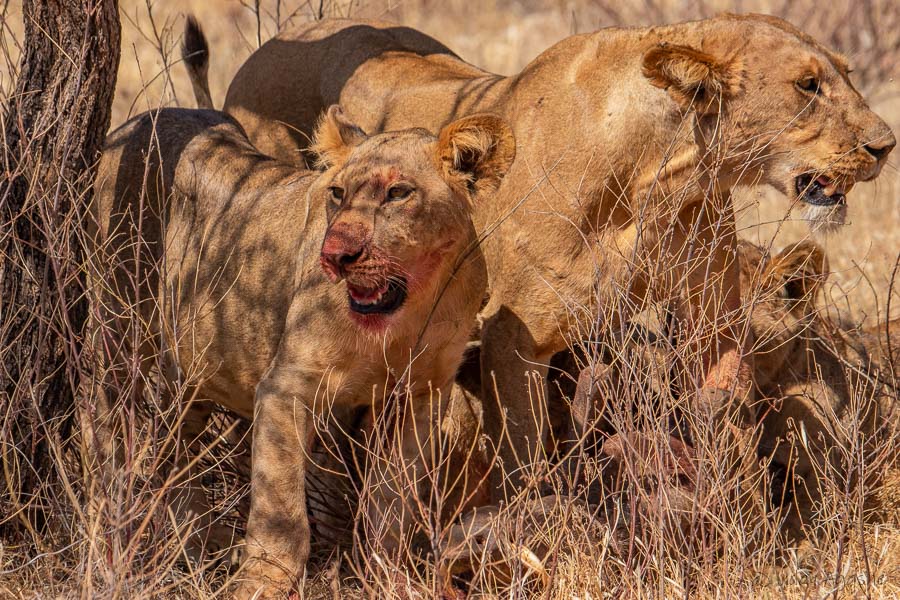 Lions on WartHog kill
Lions on WartHog kill
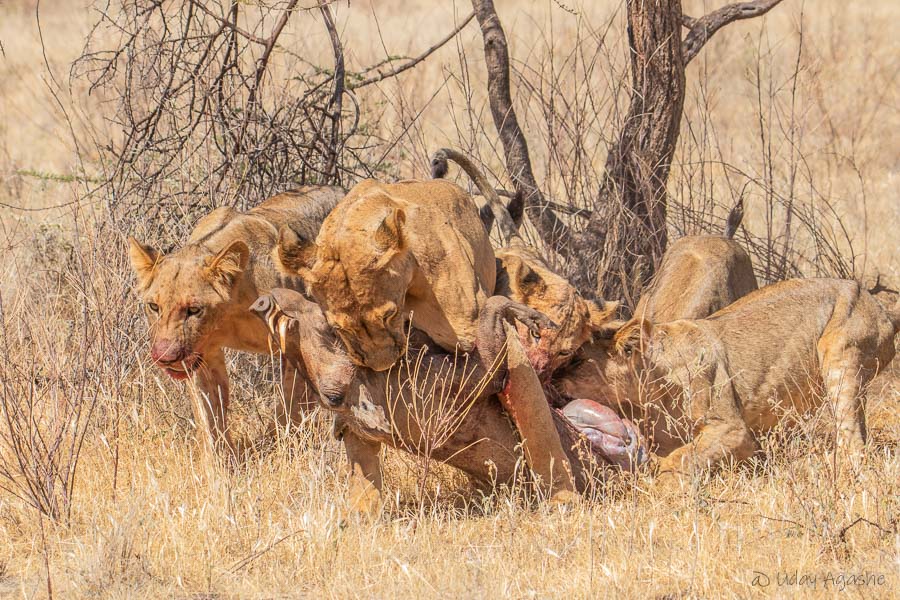 Lions on WartHog kill
Lions on WartHog kill
 Lions on WartHog kill
Lions on WartHog kill
We decided to head-back to our camp (what more can one get in just one safari) and on the way back, we managed to see the 4th Samburu attraction. The Grevy’s Zebra, what a lovely creature. The skin looks so shiny and the stripes look superfine too. These Zebras are little bigger than the common Zebra (more like horse) and the abdominal portion is plain white (no stripes).
Little later we were also able to see the white-throated bee-eater.
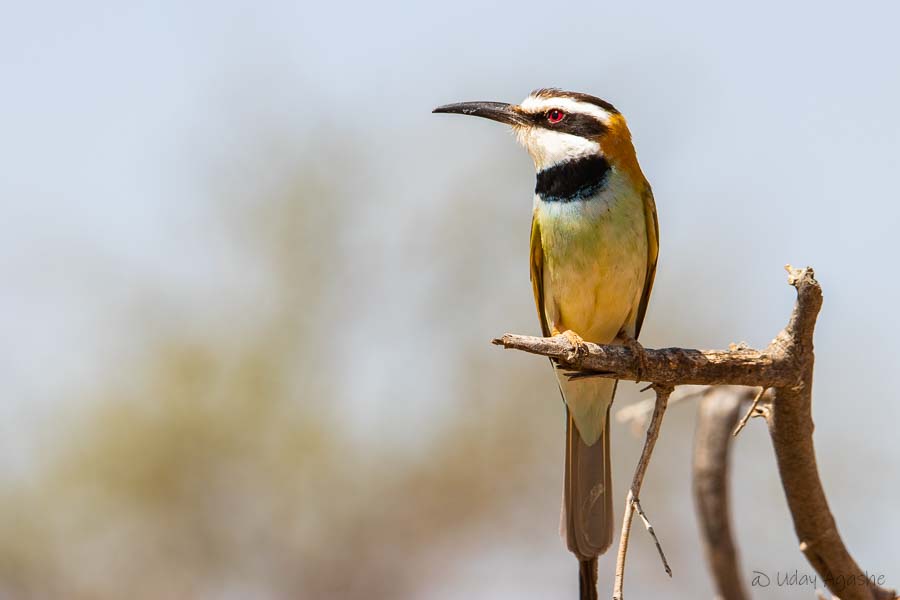 White-throated BeeEater
White-throated BeeEater
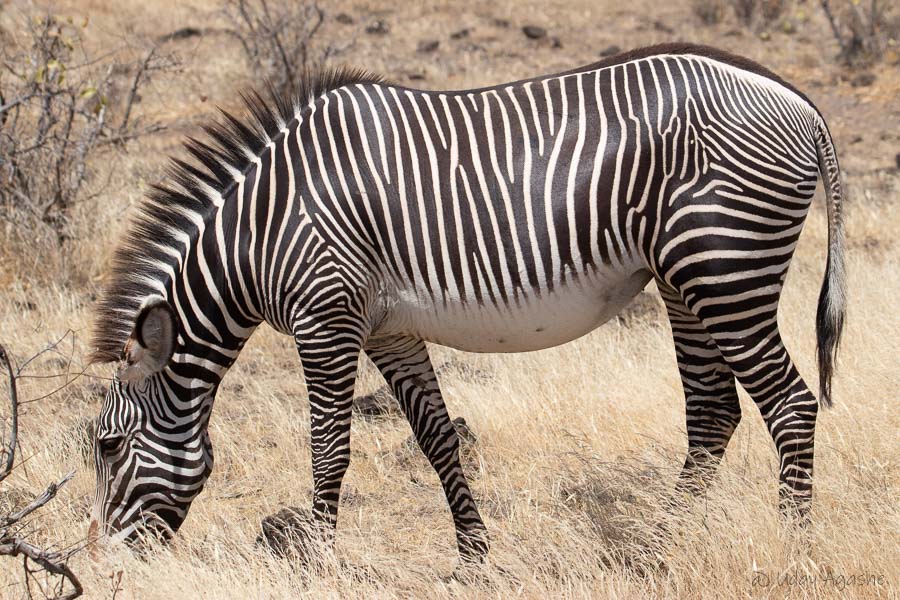 Grevy's Zebra
Grevy's Zebra
Little after 12noon, we reached the Camp and decided to wait at the reception for lunch and then go to our tents (considering the distance to the tents, walking it again was avoided). But that wait was immediately fruitful. We could do some birding right in the camp premises itself.
We could quickly capture “White-browed Sparrow-weaver”, “Red-billed Fire-Finch”, “Superb Starling” and the “Black-necked weaver”. Besides these we could also see the Red-necked hornbill (that became regular feature there), “Grey-headed Kingfisher” & the “Nubian Woodpecker”.
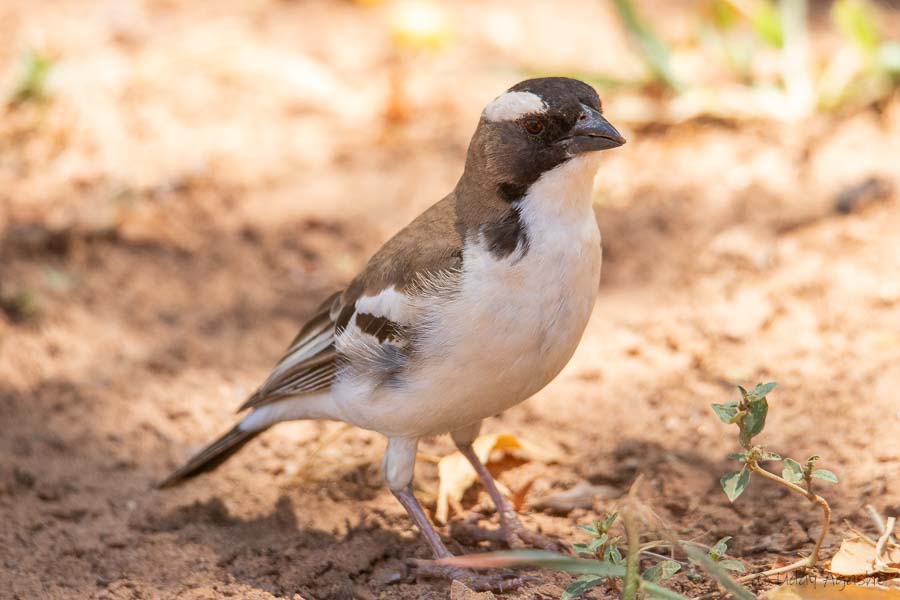 Sparrow Weaver
Sparrow Weaver
 Superb Starling
Superb Starling
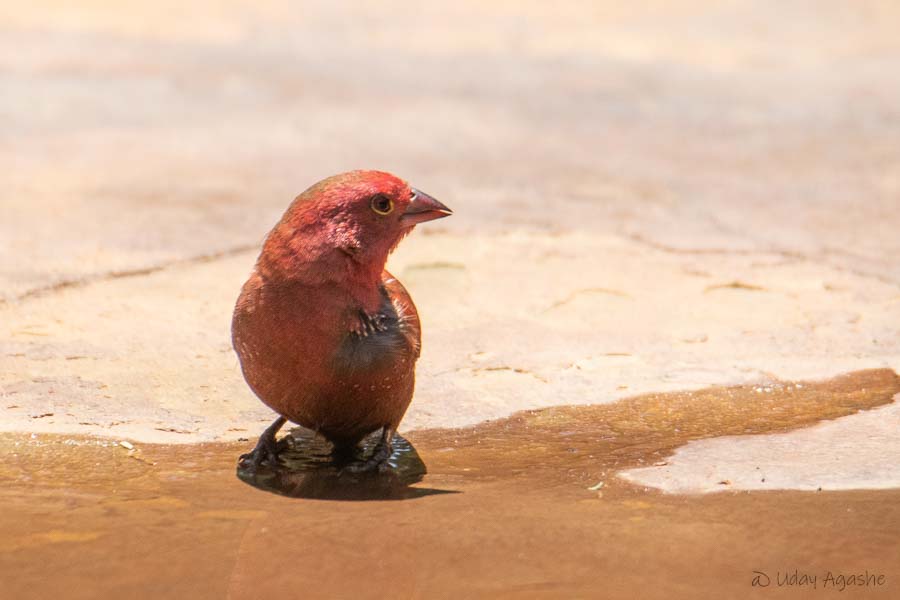 Fire-Finch
Fire-Finch
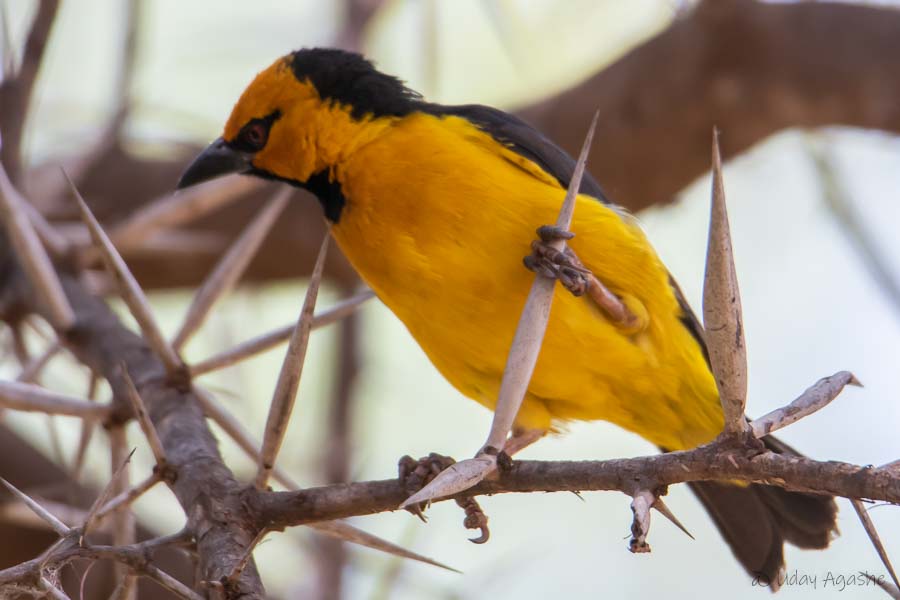 Black-necked Weaver
Black-necked Weaver
Lunch wasn’t buffet now and we had to order from their 5 course menu, that actually took much longer that we had expected and finally by about 2:30 we walked back to the tent (with the promise that we will be back at the reception area by 3:45 for tea followed by the evening safari).
Little rest (hardly any as we had to ensure additional batteries, cards are ready… during the morning safari the shutter was working non-stop and for now I was worried whether the 4 cards x 64 GB will be enough) and we were back at reception. Quick coffee and we were out for another round
Evening rounds are typically of shorter duration and sightings are also much lesser in general. But this is Africa and we had to be ready, isn’t it?
From our Ashnil camp, little towards our right was a river bed, we had observed that in the morning but now Nicholas took the path near the river bank. In the shallow water some yellow-billed storks and Marabou storks were resting and we decided not to disturb them by going any closer. Instead, Nicholas sighted an elephant herd some distance away on the bank. The elephants were playing in the water, we could get some good photos as well as some action videos. While reaching near elephants, Nicholas mentioned that he probably had seen a leopard in the nearby bushes; we did search that area (even went a bit around the bushes) but could not see anything. Near the water we could also see some (possibly juvenile) Nile crocodiles, African spoonbills, kingfisher and also the African Fish-eagle.
We were happily shooting these but Nicholas was fully alert, he kept a close watch (in front as well as thru the rear-view mirror). He suddenly became aware of some movement and cautioned us not to make any sudden movement. He had again sighted the leopard, he asked us to turn slowly in the other direction (till then we were all looking at the waters) and it was there… yes it had quietly come out of the bush and was posing thru the bushes. Only the front-seaters had better view but there was no way we could have moved the vehicle, so we did some adjustments as discretely as possible and got a few shots. It was there only for few seconds, probably got alerted by our movements (we actually thought we were doing it without any noise) and disappeared in the jungle, we couldn’t trace it again although we (along with another vehicle that was nearby) searched for next 10-15 minutes, there was just no trace of it anywhere.
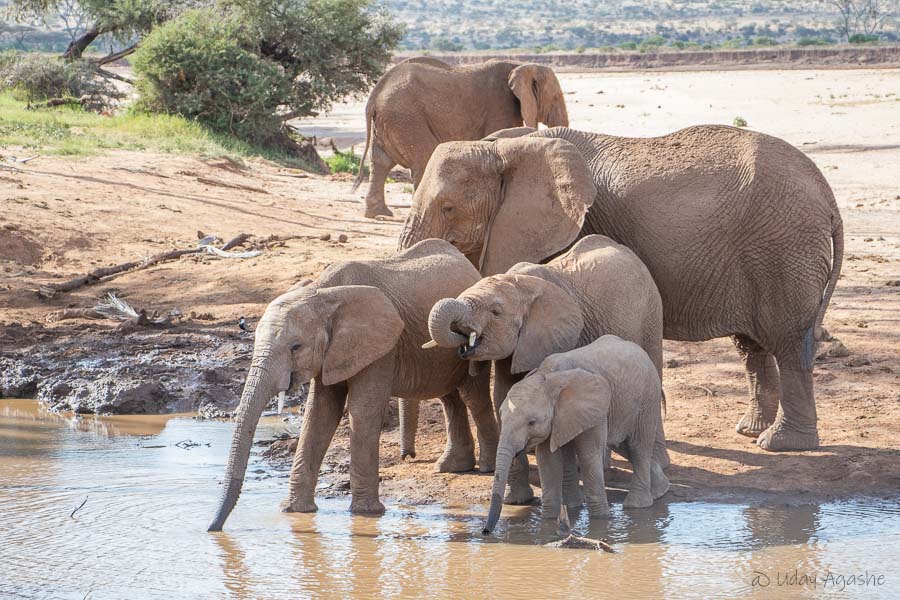 Elephants
Elephants
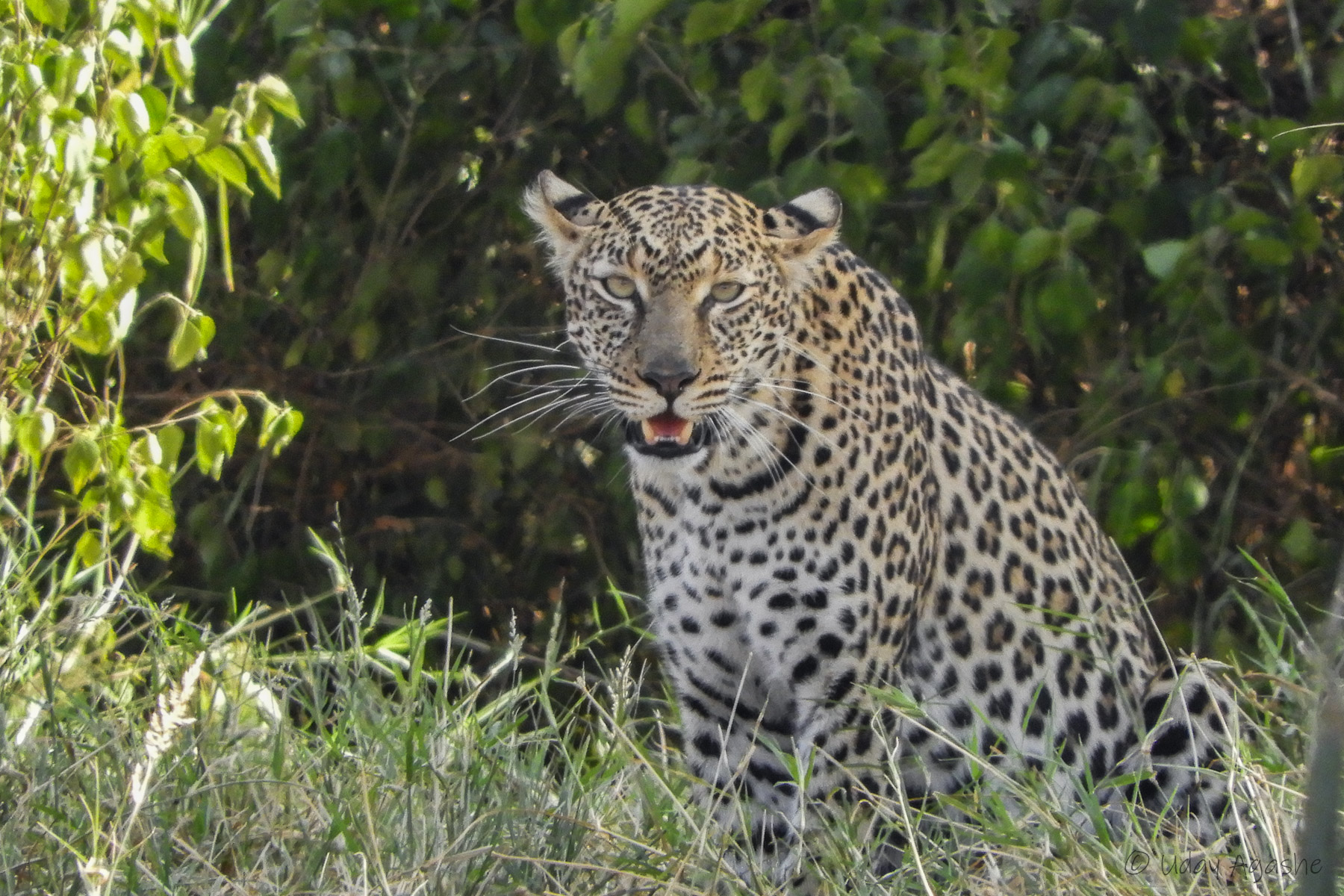 photo by Deepa
photo by Deepa
Next on display were 2 antelope verities. The Gerenuk that I have mentioned earlier (but this time it was in its typical position, making full use of its long neck) and the waterbuck. It has a very distinct white ring mark at its rear portion (clearly seen in the picture as well).
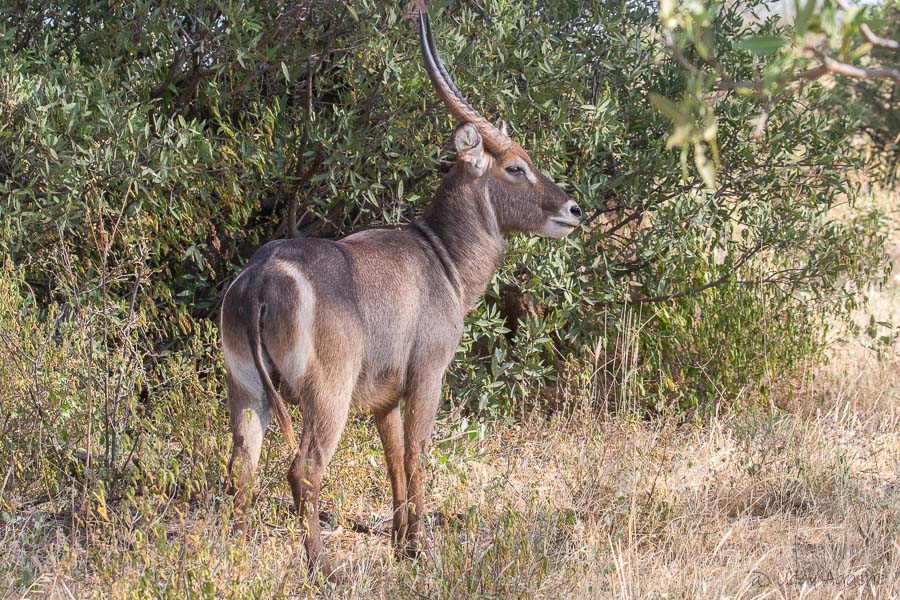 Waterbuck
Waterbuck
 Typical Pose
Typical Pose
We then had a beautiful sighting of unstriped ground squirrels. That’s not something people go to Africa for but they presented such a good photo opportunity (mother and 2 babies), we just could not resist. We were so engrossed in their little movements, one passing vehicle stopped near us to check. When they became aware that we are photographing squirrels, they were surprised (must have thought us to be some mad guys) and just moved on from there quickly.
Now the time had come to see the last remaining Samburu-big5, the reticulated Giraffe. Watching them is such a pleasing experience. As soon as we saw them, I just noticed a juvenile running very close to the jeep, it got startled by our presence and changed direction. The whole sequence is still vivid in front of my eyes (though I missed the opportunity to video-shoot it).
In fact during the entire safari there were many such opportunities when I was so engrossed in observing the wild-life that I missed nice photo opportunities, and frankly I did not regret it one bit. The whole experience was once-in-a-lifetime, not necessary to capture in camera.
There were so many giraffes on display, it was difficult to decide where to look. We got all types of photos there.. wide-angle, close-ups, with tree, with habitat, and.. and.. and….
These reticulated giraffes are little different than their Masai cousins (which we saw later); in Kenya this subspecies is seen only in Samburu.
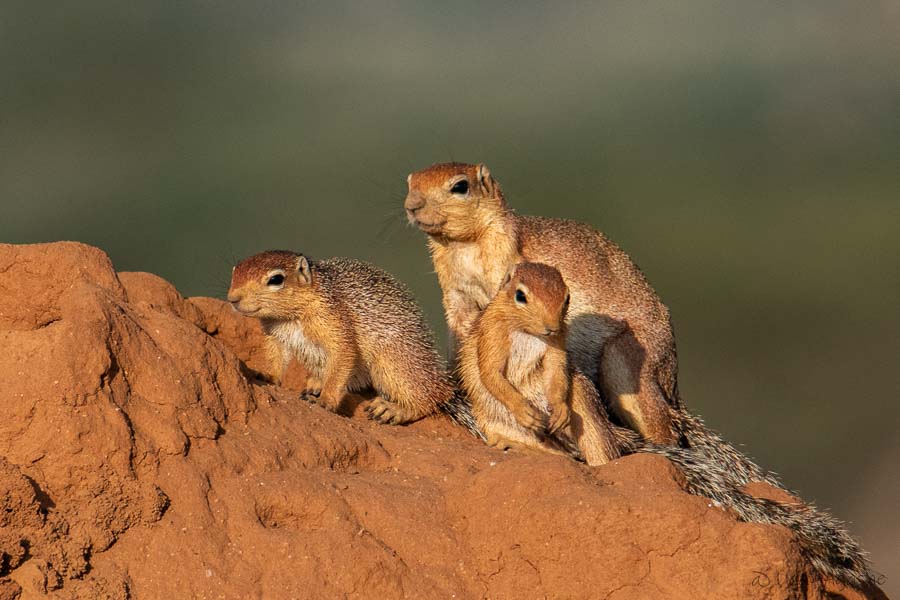 Unstriped Squirrel
Unstriped Squirrel
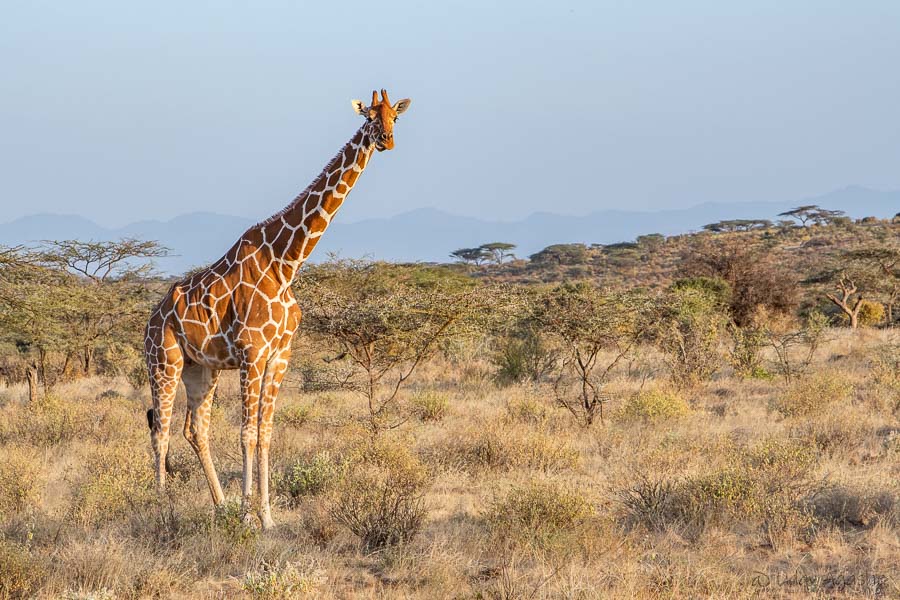 Reticulated Giraff
Reticulated Giraff
We did see some more species (mammals as well as birds) but by then the light had reduced and we did not take too many photos.
We were back in the camp by about 7pm. We were exhausted but super-happy. Went straight to the tent and dropped on the bed for some time (one reason was to rest and the other was to soak-in all the days experiences, reliving some of the moments that were still fresh in mind).
Dinner was at 8 and back to room by 9. Kept camera batteries & mobiles on charging and set the alarm for 5:15am. Got up at about 12:15 when all the electricity was off (they routinely do it between mig-night and 5am, to save electricity). It was little stuffy in the room and pitch dark. We are so used to having fans/AC that it took some time to adjust but managed to sleep well. Got up in the morning at 5 as soon as they restarted the electricity (the little light and the room fan noise was the alarm).
To be continued ...........
Part 2